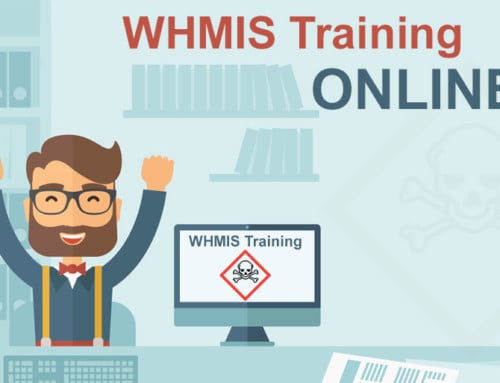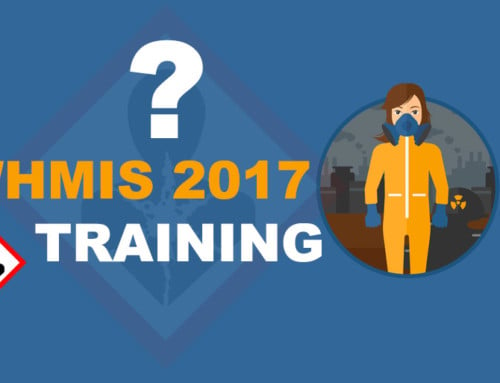WHMIS 2015 Hazard Classes and Categories
 The adoption of the Globally Harmonized System of Classification and Labeling of Chemicals (GHS) in the Workplace Hazardous Materials Information System 2015 (WHMIS 2015) creates a system in which the Canadian and International requirements for handling hazardous products are met through the use of a single safety data sheet and label, among other things.
The adoption of the Globally Harmonized System of Classification and Labeling of Chemicals (GHS) in the Workplace Hazardous Materials Information System 2015 (WHMIS 2015) creates a system in which the Canadian and International requirements for handling hazardous products are met through the use of a single safety data sheet and label, among other things.
WHMIS 2015 Hazard Groups
WHMIS 2015 applies particularly to two major hazard groups: physical and health. And each of the two hazard groups has hazard classes that are characterized by specific hazardous properties.
Physical Hazards Group: The hazardous products in this group have been classified according to their physical or chemical properties, such as reactivity, flammability, compressed gases or corrosiveness on metals.
Health Hazards Group: Hazardous products are classified in this group based on their ability to cause adverse health effects such as acute toxicity, respiratory sensitization (such as breathing difficulties, asthma or allergy), eye irritation or carcinogenicity (ability to cause cancer).
While an Environmental Hazards Group (products with effects on the ozone layer or on the aquatic environment) exists in the GHS, it has not been adopted in WHMIS 2015. However, WHMIS 2015 allows manufacturers, suppliers and employers to include environmental hazards in their labels and safety data sheets whenever possible.

WHMIS 2015 Hazard Classes
WHMIS 2015 hazard classes are a way of grouping hazardous products together based on their properties. Hazardous products with similar properties are grouped in the same classes. Most hazard classes in WHMIS 2015 are common to the GHS classes and are used worldwide by all other countries that have adopted GHS, but some are specific to WHMIS 2015.
Physical Hazards Classes
All the physical hazards that were covered in the Controlled Products Regulations (CPR) and which formed part of WHMIS 1988 have been addressed by GHS physical hazard classes except that the GHS has sub-divided the hazards differently. Likewise, all the GHS physical hazards classes have been adopted in Canada by the HPR except the Explosives hazard class. New physical hazard classes such as Simple Asphyxiants, Pyrophoric Gases, Combustible Dusts, and Physical Hazards Not Otherwise Classified, have been included in WHMIS 2015 to boost worker safety and health.

Health Hazards Classes
While WHMIS 2015 Health Hazard Classes sub-divide health hazards in a manner that is different from WHMIS 1988, all the classes address almost all the health hazards that were covered in WHMIS 1988 and include some additional types of hazards. The additional hazard classes (such as Aspiration Hazard) have been included to boost worker safety and health. WHMIS 2015 health hazard classes include all the GHS health hazard classes, together with the Biohazardous Infectious Materials class (which is not a GHS hazard class but was part of the WHMIS 1988) and a new class called the Health Hazards Not Otherwise Classified.

WHMIS 2015 Hazard Categories
In WHMIS 2015 hazard classification, every hazard class has at least a single category (or type). A category or type defines the severity or nature of the hazardous product. Hazard categories have been assigned the numbers 1, 2, 3 or more depending on the number of categories in a class while hazard types have been assigned the alphabetical letters A, B, C or more depending on the number of types per class. Category 1 implies greater hazard level (the most hazardous products in a class) than category 2, while category 3 has less hazardous products than category 2, and so on. When dealing with WHMIS 2015 hazard classes that have sub-categories, a number and a letter is used to designate the sub-categories, such as 1A, 1B, 1C and more.
Some WHMIS 2015 hazard classes (such as Corrosive to Metals) have just one hazard category, some (like carcinogenity) have two hazard categories while others (such as oxidizing liquids) have three categories. There are only very few WHMIS 2015 hazard classes (such as organic peroxides) with 5 or more categories.
Moreover, there are some exceptions to the categorization principles mentioned above. For instance, there are classes that have no numbered categories and instead, words have been used for the categories. For instance, the “Gases under Pressure” class has categories such as “compressed gas”, “dissolved gas”, “liquefied gas” and “refrigerated gas”, all of which relate to the different physical states of the packed gas and do not describe the severity or degree of hazard. Similarly, the class “Reproductive Toxicity” has a category called “effects on or via lactation” which is not numbered.

Conclusion
WHMIS 2015 hazard classes and categories allow Canadian suppliers, employers and employees dealing with hazardous products to handle and communicate the hazards associated with various products easily, clearly and effectively, resulting in improved workplace safety and health. The WHMIS 2015 classification has included more hazard classes and categories for better hazard identification, labeling, safety data sheets and handling, easier compliance with regulations on hazardous products, and for enhanced competitiveness of Canadian suppliers of hazardous products on the global market.
The GHS provides standardized hazard symbols, statements and signal words for improved communication of hazard information; identifies hazards that were not addressed in the old WHMIS (WHMIS 1988) such as aspiration hazards; and ensures that more detailed information on various hazardous products is provided to employers and employees.
Therefore, WHMIS 2015 ensures better worker health and safety, ease of trade with the US and other Canadian partners, and enhanced competitiveness of Canadian exporters and suppliers dealing in workplace chemicals. You can learn much more by taking a recognized WHMIS Certification Training program.
General WHMIS 2015 Resources:
WHMIS 2015 Labels
WHMIS 2015 Hazard Classification
WHMIS 2015 Pictograms
WHMIS 2015 Safety Data Sheets
WHMIS 2015 Education & Training






